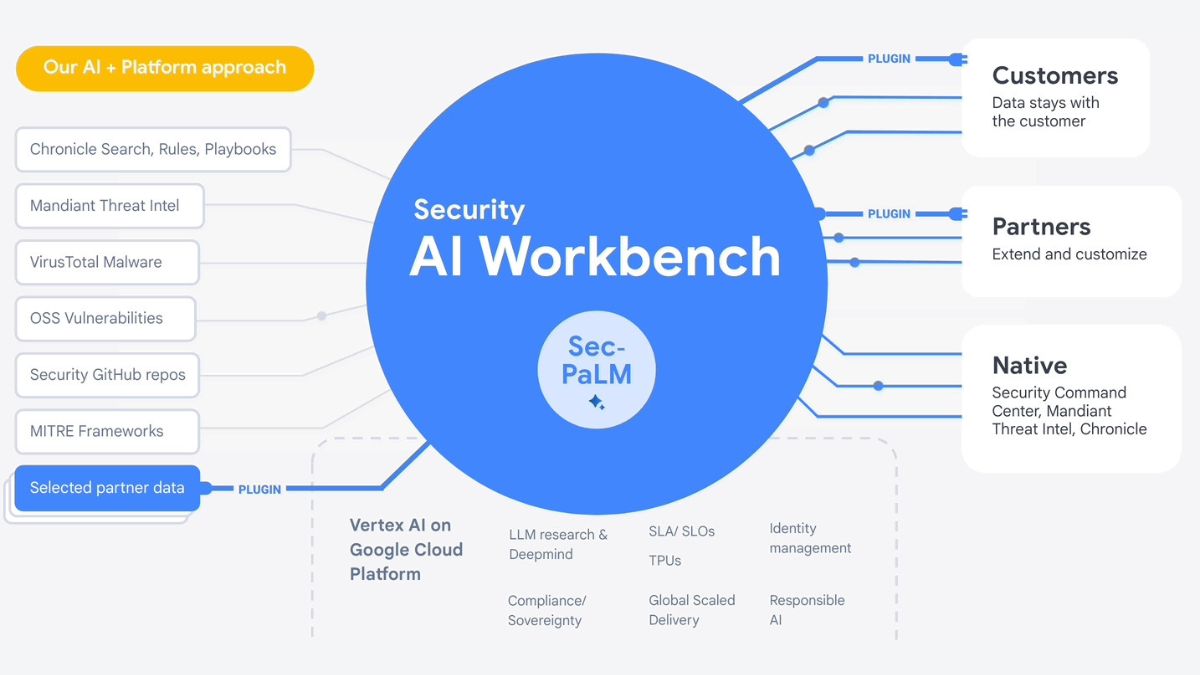- By Ashish Singh
- Tue, 25 Apr 2023 06:45 PM (IST)
- Source:JND
A FEW weeks after Microsoft announced its cybersecurity co-pilot in the global market, Google has yet again entered the generative AI tool race by announcing Sec-PaLM, the industry's first extensible platform powered by a specialised, security LLM. It is a large language model capable of meeting security challenges.
According to a blog post by Sunil Potti, VP/GM, of Google Cloud Security, the new security model is capable of meeting security challenges by leveraging Google's visibility into the threat landscape and Mandiant's frontline intelligence on vulnerabilities, malware, threat indicators, and behavioural threat on actor profiles.
Furthermore, the Google Cloud Security AI Workbench has introduced a new setup that allows users to address threat overload, time-consuming tools and the talent gap in a unique way. Additionally, the company announced that it would provide customers with plug-in integrations for threat intelligence, workflow, and other critical security functionality.
The company hopes that by offering AI-based security, it will be able to provide more security to IT companies and others. Accenture, an Irish-American professional services company headquartered in Dublin, has become the first partner to put the new Security AI Workbench to the test.
READ: Microsoft Introduces GPT4-Based AI Cybersecurity Tool; Here's What Will Change
Here are the tools that are announced by Google:
1. Mendicant Threat Intelligence AI:
The tool, which is based on Mandiant's extensive threat graph and will quickly identify, summarise, and address threats relating to the organisation.
2. Assured OSS:
The tool that Google will use to add more open-source software to its vulnerability management solution will make use of large language models, the company has also announced.
3. Security Command Centre AI:
Another interesting tool would enable businesses to translate complicated threat graphs into understandable explanations and will include all affected assets.

